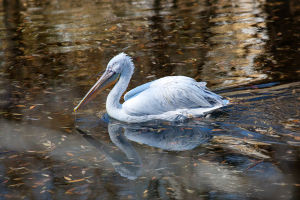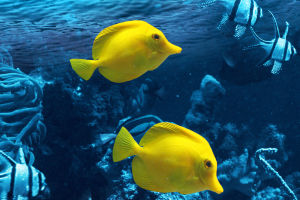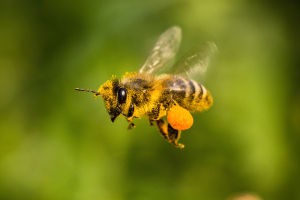We all know about Nemo, right? Thanks to the famous movie Finding Nemo, clownfish gained worldwide fame. But what exactly makes these little creatures so fascinating?
Let's dive into 15 fun and surprising facts about clownfish that will make you appreciate them even more!
1. There Are 30 Different Species of Clownfish
Did you know there are around 30 species of clownfish? Among them, 28 species belong to the Amphiprion genus, while 2 species belong to the Premnas genus. This makes them a diverse group, each with its own unique traits and characteristics!
2. Clownfish Live in Symbiosis with Sea Anemones
One of the most interesting things about clownfish is their relationship with sea anemones. These fish live inside the stinging tentacles of sea anemones, which provide protection from predators. In return, clownfish help sea anemones by cleaning them and even using their waste to feed the anemones! It's a perfect partnership where both thrive together.
3. Their Orange Color with White Stripes is Their Signature Look
Most clownfish are orange with one or more white stripes across their bodies. These stripes are outlined with black lines, creating a distinct and recognizable appearance. Their bright colors make them easy to spot in the vibrant coral reefs they call home.
4. The Ocellaris Clownfish is the Most Popular
The Ocellaris clownfish, also known as the false percula clownfish, is the most popular species of clownfish and is commonly seen in aquariums worldwide. This species can grow up to 11 cm in length and is mostly found in western Pacific Ocean. It also made an iconic appearance in Finding Nemo, where it was represented by the character Marlin.
5. Clownfish Are Omnivores
Clownfish are not picky eaters! They feed on a variety of foods, primarily consuming the leftover food from the sea anemones they live with. This includes plankton, algae, copepods, and even larvae of other marine animals. Sometimes, they even nibble on the tentacles of their sea anemone hosts!
6. Clownfish Have a Hierarchical Social Structure
Clownfish live in tight-knit social groups, and their social structure is quite strict. At the top of the hierarchy is the dominant female, the largest and most aggressive fish. She mates with the largest male, who is her only mate. This structure ensures that only the strongest fish reproduce.
7. They Practice Monogamy
Clownfish practice monogamy, meaning they have one mate for life. A clownfish group typically consists of a dominant female, a male who can reproduce, and a group of younger males who support the pair. Only the breeding pair mates and reproduces.
8. Clownfish Reproduce by Laying Eggs
Like many fish, clownfish reproduce by laying eggs. The male prepares a flat surface, usually a rock, and the female lays between 600 to 1,500 eggs on it. The male then fertilizes the eggs and takes care of them until they hatch.
9. The Male Clownfish Takes Care of the Eggs
After the female lays her eggs, the male takes full responsibility for caring for them. He clears away any dead eggs and circulates water with his fins to ensure the eggs get enough oxygen. This level of care helps the eggs develop properly until they hatch.
10. Clownfish Hatch in 6-10 Days
After about 6 to 10 days, the clownfish eggs hatch. This usually happens at night, around two hours after dusk. The baby clownfish, known as fry, will then swim away and begin their life in the ocean.
11. Clownfish Are the Most Traded Saltwater Fish
Clownfish are among the most traded saltwater fish in the world. Because they are easy to breed in captivity, fewer clownfish are caught in the wild. However, many still come from the ocean, contributing to coral reef damage and environmental concerns.
12. Wild Clownfish Live for 10 to 13 Years
In the wild, clownfish typically live for 10 to 13 years. However, certain species, like the Amphiprion percula (the famous Nemo fish), can live up to 30 years in captivity under optimal conditions.
13. All Clownfish Are Born Male
Interestingly, all clownfish are born male. However, they can change gender when needed. For example, if the dominant female dies, the largest male in the group will change gender and become the new female, keeping the group stable.
14. Clownfish Will Eat Soft Coral If They Can't Find Anemones
If clownfish can't find sea anemones to live in, they may turn to soft corals or large polyps on stony corals as their next best option for survival. They'll even feed on these corals if needed!
15. Popular Clownfish Species
Some of the most popular types of clownfish include:
• Ocellaris Clownfish (the "Nemo" fish)
• Clark's Clownfish
• Tomato Clownfish
• Maroon Clownfish
These species are beloved by aquarium enthusiasts around the world due to their beauty and unique behaviors!
Conclusion: Why Clownfish Are So Special?
As we've seen, clownfish are much more than just "Nemo" from the movies. From their fascinating social structure to their colorful appearance and interesting reproductive behaviors, clownfish are truly unique creatures of the ocean. Next time you spot one, you'll know just how special they are!
So, Lykkers, what do you think? Are you fascinated by the world of clownfish now? Feel free to share your thoughts with us!


